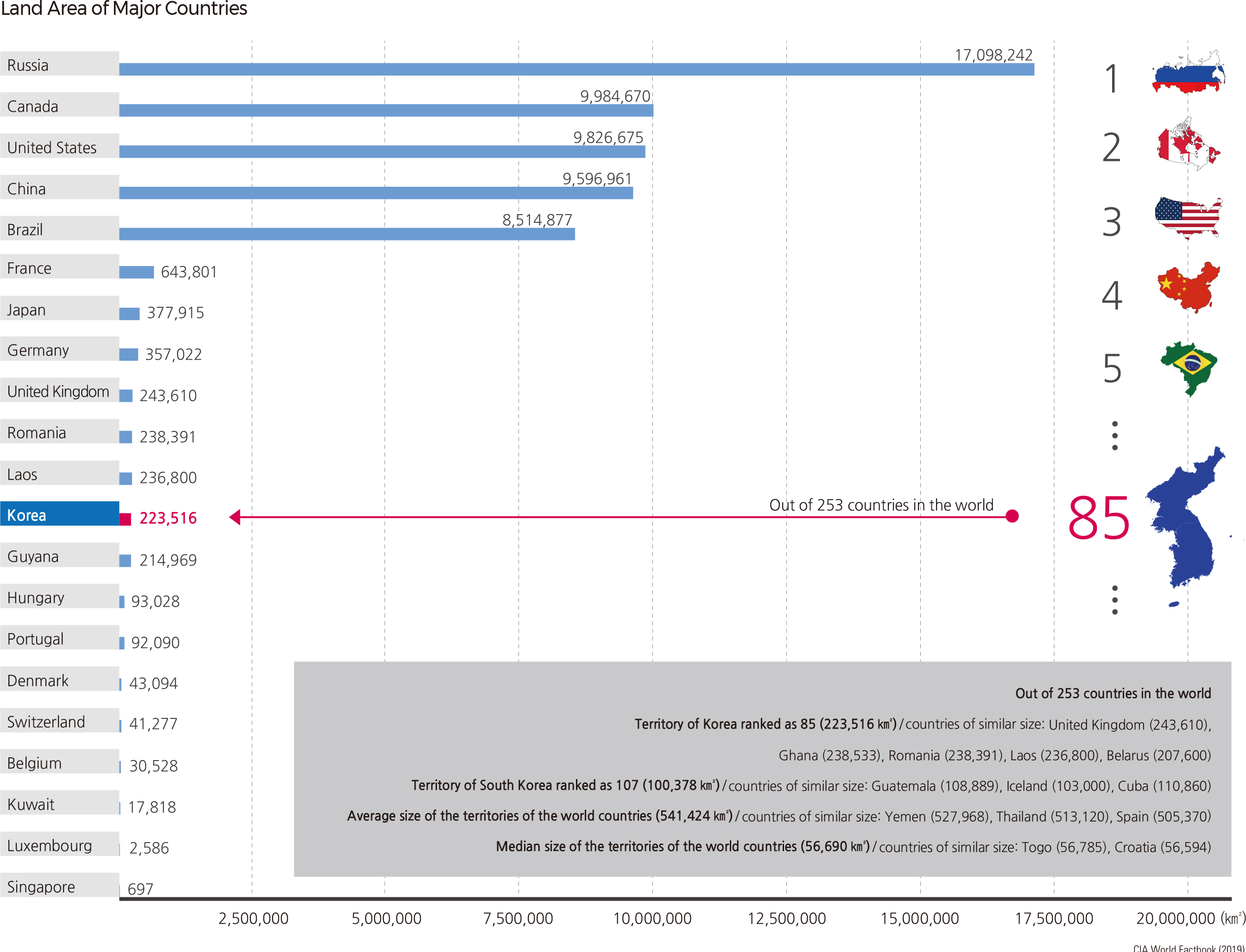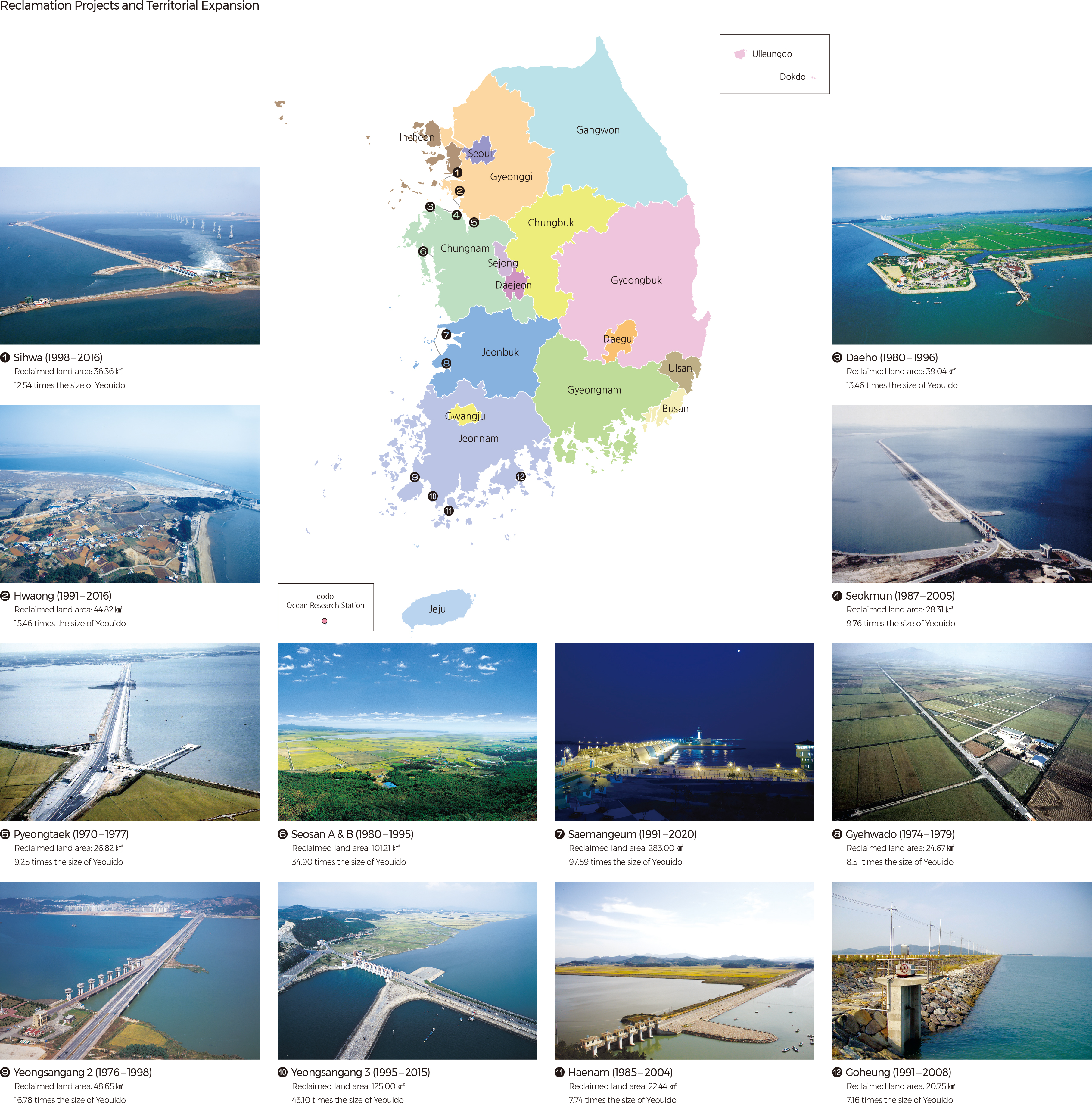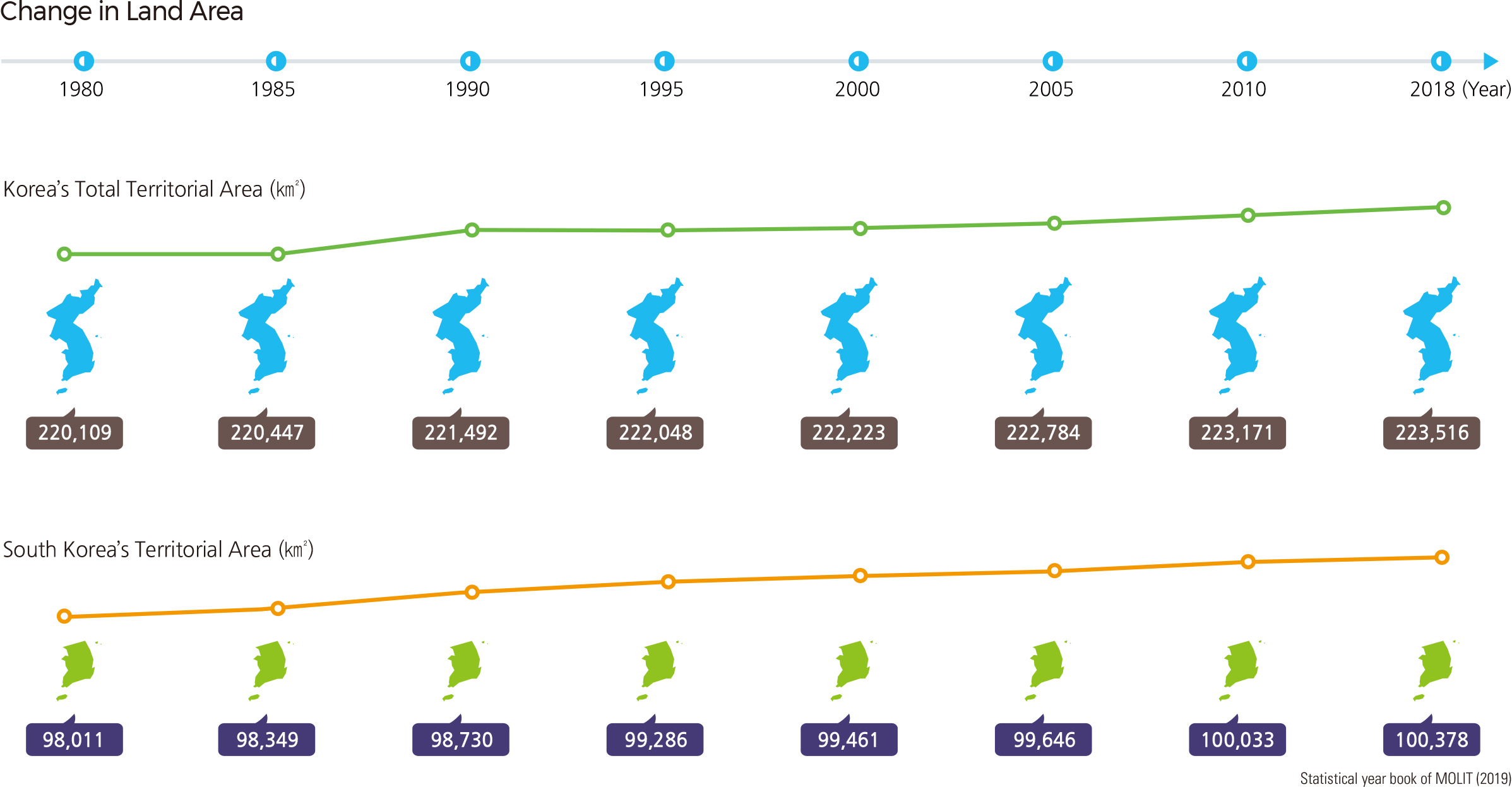English I 2019
The total size of Korea’s territory is 223,516 km² (North and South combined), which ranks Korea 85th among the 253 countries around the world. In comparison to other countries in the world, Korea is slightly larger than Cambodia (181,035 km²) and around two-thirds the size of the Philippines (300,000 km²), Vietnam (331,210 km²), and Japan (377,915 km²). The size of the Korean territory is similar to that of the United Kingdom (243,610 km²), Ghana (238,533 km²), Laos (236,800 km²), and Belarus (207,600 km²). The total area for South Korea alone is 100,378 km², which ranks it 107th, and the area of North Korea is 123,138 km², which ranks Korea 97th in the world.
The average land area of countries around the world is 541,424 km². Countries with approximately this size include Botswana (581,730 km²), Yemen (527,968 km²), Kenya (580,367 km²), Thailand (513,120 km²), and Spain (505,370 km²). These countries are ranked in the top 50.
Countries that whose territories are close to the median size include Togo (56,785 km²), Croatia (56,594 km²), Bosnia and Herzegovina (each 51,197 km²), Costa Rica (51,100 km²), and Slovakia (49,035 km²). Korea’s land area (North and South combined) is smaller than the global average but bigger than the global median. If the few nations with vast territories such as Russia, Canada, and the United States are excluded from the global average, Korea shows no significant difference from the average nation in terms of land area.
The land area of Korea has steadily increased from 220,109 km² in 1980 to 223,516 km² in 2018. The territorial area of South Korea alone has increased from 98,011 km² to 100,378 km² during the same period. In 2010, the area of the South exceeded 100,000 km² for the first time. The land expansion was largely due to reclamation projects. Estuary banks and floodgates were built, breakwaters were erected to block the sea, and former tidelands were changed to create land for agriculture, industry, residence, and public facilities. Through extensive reclamation projects, the land area continues to increase gradually.
Agricultural land and large-scale projects began in earnest in the 1960s and 1970s. Along the West and South Seas, the government led large-scale reclamation projects to secure more agricultural land. In the 1980s, the private sector joined the projects. Since the 1990s, the awareness of and interest in the value of reclaimed lands have grown. Various aspects such as environment, ecology, landscape, and education have been balanced to ensure that the needs for the agricultural or industrial land purposes have been reduced on these reclaimed land projects. |





